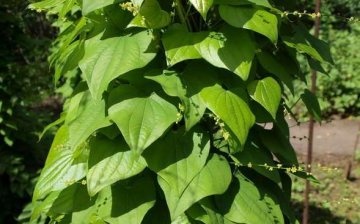The use of Caucasian dioscorea in medicine
Dioscorea Caucasian is a herbaceous vine, belongs to perennial plants. Dioscorea vines can grow in length from 2.5 to 4 meters. The plant lives in the Transcaucasian zones: in the Adler region of the Krasnodar Territory and in Abkhazia.
To date, there are not so many representatives of the Caucasian Dioscorea left in nature, therefore it is included in the Red Book, they began to cultivate it specifically in order to preserve this useful plant.
The use of Caucasian Dioscorea in medicine is associated with the use of the properties of its rhizomes together with the roots. Medicinal raw materials are collected during the entire growing season: from about the end of April to late autumn.
Rhizomes are collected from a cultivated or wild plant, thoroughly cleaned of the earthen mixture, washed, cut into small pieces and dried. Raw materials are stored without losing their useful properties for 3 years.
For quite a long time before the discovery of more accessible raw materials, diosgenin contained in the rhizome of Caucasian Dioscorea was used for the synthesis of steroid hormones: progesterone, cortisone and other corticosteroids.
The saponins contained in the raw materials determine the use of Caucasian Dioscorea in the treatment of atherosclerosis, since they contribute to the binding of cholesterol.
Dioscorea-based preparations are recommended for use at the initial stages of cerebral atherosclerosis, for its prevention and with its already pronounced course.
When taken, the percentage of headaches decreases, the feeling of fatigue decreases, and tinnitus disappears. Dioscorea is also used for strokes, heart attacks, gout, arthritis.



